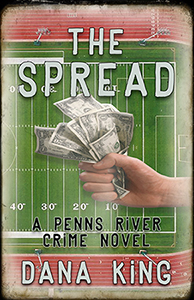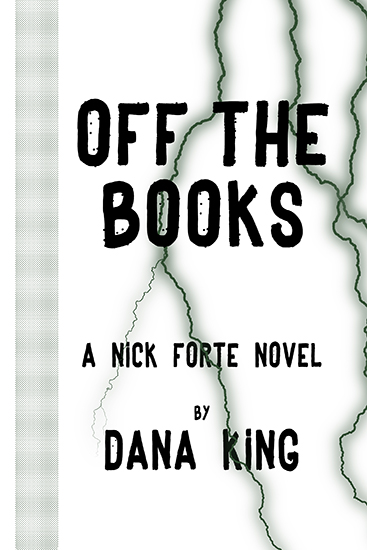The 2017 Creatures,
Crimes, and Creativity Conference in Columbia MD is history. The fifth C3
continued the progress of its predecessors and raised the bar even higher for
next year’s. As with any event where multiple sessions are always underway, all
I can do is to judge highlights from my perspective, but that’s okay. My
perspective is the one I care about.
One caveat in
advance: I took notes the best I could, but I am not a stenographer. Nor does
my handwriting become more legible as I hurry. Apologies in advance for missed
quotes, misquotes, and misattributions.
Friday September
8
Jason Bourse, Lara Croft, or Bruce Lee:
Getting Fight Scenes Right
Moderated by yours
truly with panelists David Swinson, Michael Black, Jonathan Maberry.
I hit the ground
running with this high-profile panel. We covered plenty of tips, advice, pet
peeves, dos, and don’ts, including:
- Cops are always aware of what is behind the target when they’re
thinking of shooting.
- Many martial arts are sports, not self-defense techniques.
- Street fights are different and tougher than a competition or
practice.
- How to look for possible weapons in any situation.
Oh, and Jonathan
showed us how beat hell out of someone with a shot glass.
High Tech, Hunches, or Shoe Leather?
John Gilstrap,
Bernard Shaffer, Rick Ollerman, Walter Curran (Moderator)
This panel looked
not only at some techniques, but examined truths we should all think about when
discussing law enforcement, whether fictional or real. John Gilstrap pointed
out the author doesn’t have to know what the character knows; he just has to
convince the reader that the character does. He also noted that if you took
sirens off firetrucks you’d have 25% as many firefighters.
Bernard Shaffer
followed up with a point that cops’ personalities are pretty much the same
around the world.
Both agreed that
cops, firefighters, and other first responders have to walk into the worst
moments of people’s lives and bring order. Bernard added that we don’t do a
very good job of keeping the wrong people out of the jobs.
Seducing Your Readers in Chapter One.
John Gilstrap,
Sandra Campbell, Bill Rapp, Denise Camacho (Moderator)
A lively panel that
discussed how to hook readers early, though not necessarily in the first
paragraph or sentence as some would argue. The two money quotes were both
Gilstrap’s, who said the key to any story is interesting people doing
interesting things in interesting ways in interesting places, and reminded us
all that the beginning of the book is not the beginning of the story, using
Harry Potter as an example. The story begins with Harry’s parents and Snape at
Hogwarts. The book begins substantially later.
Booze, Unemployment, or Drugs: Developing
Flawed Characters
Peter Blauner,
Chris Bauer, Jeff Markowitz, Eric Gardner (Moderator)
Jeff Markowitz
believes there’s one thing he needs to know when creating a character. It can
be just about anything, but it’s the hook on which he’ll hang the
characterization.
Peter Blauner spent
six months with probation officers researching his first book. They’re as much
social worker as cop and get into the job to help people. Quote from a PO:
First you want to help them, then you find they can’t change and you end up
hating them.
Keynote address by Peter Blauner
The after-dinner
address was entertaining and educational. It’s always fun to learn how top
professionals’ careers end up not at all where they have begun, and to hear the
twists and turns that brought them to where they are. Blauner is a rare
combination, a writer who’s successful both as a novelist and in television. I
believe his experiences in each taught everyone there something, regardless of
their own experience level.
Well, yeah, then I
went to the bar. A C3 bar hits the sweet spot. True, there aren’t as many people
there as at Bouchercon, but that means you can actually talk to those you want
to talk to, be heard, and you can get a frigging drink. Thanks to Bill Rapp,
David and Catherine Swinson, Bernard Shaffer, Peter Blauner, Jeffery Deaver,
and at least one other person whose names I’d remember had not I had that one
last beer for what I think is the best discussion of craft I’ve ever had at a
conference.
Saturday
September 9
How to do a Great Book Signing
Austin Camacho,
Jeff Markowitz, Patricia Hale (Moderator), and me.
Once again they put
me to work first thing. I knew in advance this would be a lot of fun. Patricia
set us up well, and Austin, Jeff, and I have been friends for a while now and
had a ball playing off each other.
Bringing it all Together: An Example of
Writing a Thriller
Jeffery Deaver
Jeffery Deaver took
his time to walk us through his 13 Rules of Writing. I’m not going through them
all—you want to know, get off your ass and go to a conference—but highlights
included:
1. Define your goal
as a writer.
2. Understand that
your mission is to tell the most emotionally engaging story you can.
3. Writing fiction
is a business, not an art.
8. Re-write,
re-write, re-write. (See? I said I wouldn’t tell them all.)
10. Writer’s block
does not exist.
And my personal
favorite:
13. Be happy.
Jeffery was
informative and entertaining and made the 45 minutes fly by. It was also
gratifying to see Peter Blauner, David Swinson, and other established writers
in the audience, still looking to learn.
Saturday’s lunch
included me interviewing David Swinson, which was a treat in every way. Many
thanks to organizer Austin Camacho and to David for allowing me to share the
dais with a good friend and rapidly rising writer who truly does not appreciate
how good he is.
We’ll have more on
this year’s conference next week.



No comments:
Post a Comment